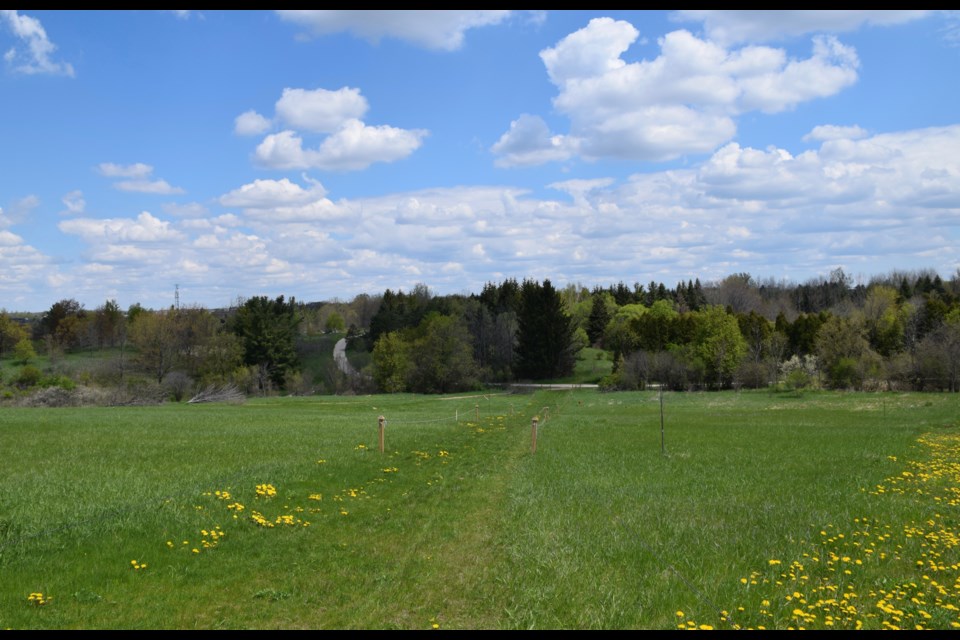Site preparation has begun on the relocation of the Guelph Turfgrass Institute (GTI) from its current location east of Victoria Road, to sprawling lands on the University of Guelph’s Arboretum on the west side of Victoria.
The university announced Thursday in a campus bulletin that new turfgrass plots will soon be growing on former farmlands that are part of an expansive section of the Arboretum that is north of College Avenue.
A walking inspection of the site on Thursday found that a number of trees have been cut around the edges of the plots, which total about seven hectares (17 acres) of land. There appear to be two sections of land, both covered with wild grass.
GTI is managed by the university in partnership with the Ontario Ministry of Agriculture, Food and Rural Affairs. Members of the institute conduct research on pesticide use, grass species, disease control, seeding methods, and optimal sports field design and construction.
It was established in 1987, and is recognized globally in the turfgrass field.
The current location is owned by the Agricultural Research Institute of Ontario. The lease on it runs out in 2018, and the U of G board of governors decided last year to move the institute to nearby Arboretum land. In the bulletin, the university said it plans to construct a new facility in the Arboretum in 2017. The current GTI building will remain open until 2018.
There is some opposition to the move. In a resident letter to U of G president Franco Vaccarino, John Ambrose, the former curator of the Arboretum, warned that the idea was bad for the overall ecological integrity of the Arboretum. He added that the relocation could pose a threat to some 17 locally significant bird species that use the land as habitat – Bobolink, Meadowlark and Barn Swallow among them.
In his letter, Ambrose said the university was disregarding its responsibilities as stewards of the Arboretum. He called for a dramatic reduction in the size of the turfgrass plots. There is an urgent need to leave the Arboretum intact, given that it may soon be surrounded by residential development, he argued.
“Opens spaces such as the Arboretum should be considered sacred and vital to the quality of life in Guelph,” Ambrose wrote.
Last week, a meeting of the city’s environmental advisory committee meeting received a city staff report on the environmental impact study done related to the relocation. The staff report expressed concerns about potential negative impacts to biodiversity and species at risk from moving turfgrass plots and structures into the Arboretum.
“We have a comprehensive and coordinated design approach in engineering, environmental sustainability and landscape architecture,” said Don O’Leary, U of G’s vice-president of finance, administration and risk, speaking in the bulletin about the relocation.
Rich Moccia, associate vice-president research, strategic partnerships, said the relocation is a reflection of changes in the Ontario government’s long-term development needs for the GTI property.
U of G, the Agricultural Research Institute of Ontario, OMAFRA and the turfgrass industry partners are funding the move.
Along with turfgrass plots and greens, the plan includes an irrigation pond, a pair of storm-water ponds, and upgrades to facilities already at the new site.
An archeological investigation is under way at the new site. All mitigation strategies and compensation recommended in the environmental impact study will be followed, the university stated.
